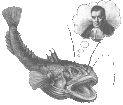UW Aquatic & Fishery Sciences Quantitative Seminar
Amanda Bradford
Protected Species Division, Pacific Islands Fisheries Science Center, NMFS, NOAA
Line-transect abundance estimates of cetaceans in the Hawaiian EEZ
Abstract
A ship-based, visual line-transect survey was conducted during the summer-fall of 2010 to obtain updated abundance estimates of cetaceans in the U.S. Exclusive Economic Zone of the Hawaiian Islands (Hawaiian EEZ), which was last comprehensively surveyed in 2002. A multiple-covariate approach was used to estimate the detection function and abundance of most sighted cetaceans. Given the low sighting rates in the study area, the 2010 sightings were pooled with sightings of the same and, as appropriate, other species collected during previous line-transect surveys of the central North Pacific for estimating detection functions. Estimated trackline detection probabilities (g(0)) account for the effect of sighting conditions and are markedly lower than estimates used in previous studies. Sightings of 23 cetacean species (17 odontocetes and six mysticetes) were made during the 2010 survey, and stock abundance was estimated for 19 of them (15 odontocetes and four mysticetes). Group size and Beaufort sea state were the most important factors affecting the perpendicular detection distances to cetacean groups. Adjustments to the 2010 data collection protocol for false killer whales (Pseudorca crassidens) necessitated a separate and specialized abundance analysis for this species. In that analysis, false killer whale subgroups were treated as the analytical detection unit instead of groups because subgroups better conform to the specifications of line-transect theory. Cetacean density in the Hawaiian EEZ is low overall, although the 2010 estimates are generally higher than those from 2002 because of the lower g(0) estimates used in the current study. Estimated abundance is highest for delphinid species, particularly for rough-toothed (Steno bredanensis), striped (Stenella coeruleoalba), pantropical spotted (S. attenuata), and Fraser’s (Lagenodelphis hosei) dolphins; and lowest for rorqual species, especially blue (Balaenoptera musculus) and fin (B. physalus) whales, and killer whales (Orcinus orca).

